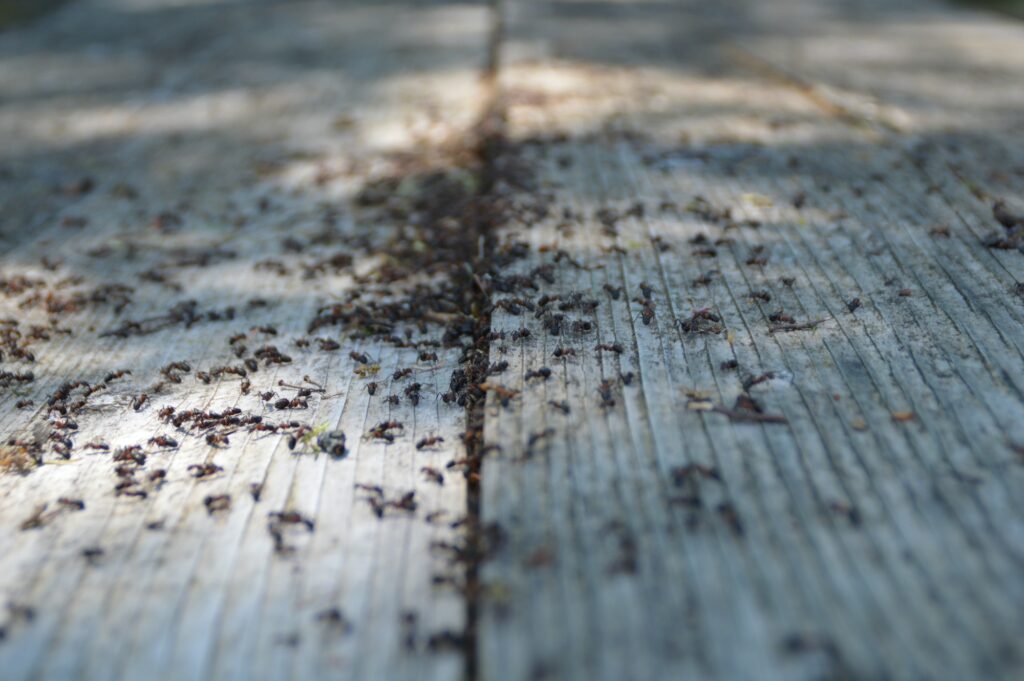- 803-469-7378
- Mon-Fri: 8:00-5:00

Menu

We eliminate the colony and the source!

Ant control can be difficult, but here are a few things you should know about ants’ behavior that can cause big headaches for you and your home:

An ant infestation is primarily caused by poor sanitation. Meal-seeking ants go after food sources like dishes left in the sink, food residue on countertops, crumbs on the floor, and trash cans that haven’t been regularly emptied. The entry of a few foragers into a home can become a significant issue if colonies develop in walls, lawns, or under home foundations.
Ants have four distinct and very different life stages: egg, larvae, pupae, and adults. These stages are known as complete metamorphosis. The life cycle of an ant typically takes several weeks to several months, depending on its species and the environment.
Eggs
When a female ant successfully mates with a male ant, she becomes a queen ant that lays eggs. Fertile queens choose a sheltered place to start their nest (colony) and lay eggs. Eggs of ants are very small – only half a millimeter in diameter. These white, transparent eggs are oval in shape.
Larvae
The legless, grub-like larvae hatch after about 1-2 weeks in the egg stage. In this stage, the larvae have a voracious appetite, and the adult ants spend much of their time feeding them food and liquids that they digest and regurgitate.
Pupae
During the pupal stage, the larva molts and sheds its skin. Although pupae resemble adults, their legs and antennae are folded into their bodies and pressed together. The pupae of ants are typically white at first, but they gradually darken as they mature. In some ant species, pupae are housed in protective cocoons.
Adult
Upon completion of the pupal stage, the adult ant emerges. The adult ant is fully grown at the time of emergence, but its color darkens with age. A colony caste consists of three different types of ants; queens, workers, or males. Queens are fertile females who lay all the eggs in a colony. The workers are females who do not reproduce, but gather food, feed the larvae, and maintain and clean the nest. Workers are wingless, and they are seen collecting food or defending the colony from intruders. Male ants are winged, but their only job is to mate with queens during the swarming process.
When a female ant successfully mates with a male ant, she becomes a queen ant that lays eggs. Fertile queens choose a sheltered place to start their nest (colony) and lay eggs. Eggs of ants are very small – only half a millimeter in diameter. These white, transparent eggs are oval in shape.
The legless, grub-like larvae hatch after about 1-2 weeks in the egg stage. In this stage, the larvae have a voracious appetite, and the adult ants spend much of their time feeding them food and liquids that they digest and regurgitate.
During the pupal stage, the larva molts and sheds its skin. Although pupae resemble adults, their legs and antennae are folded into their bodies and pressed together. The pupae of ants are typically white at first, but they gradually darken as they mature. In some ant species, pupae are housed in protective cocoons.
Upon completion of the pupal stage, the adult ant emerges. The adult ant is fully grown at the time of emergence, but its color darkens with age. A colony caste consists of three different types of ants; queens, workers, or males. Queens are fertile females who lay all the eggs in a colony. The workers are females who do not reproduce, but gather food, feed the larvae, and maintain and clean the nest. Workers are wingless, and they are seen collecting food or defending the colony from intruders. Male ants are winged, but their only job is to mate with queens during the swarming process.
Gamecock Exterminating Company has knowledgeable technicians who have experience in dealing with ant infestations of all types. We offer competitively priced services, and homeowners are welcome to contact us for a free quote.
Site by 716 Co.